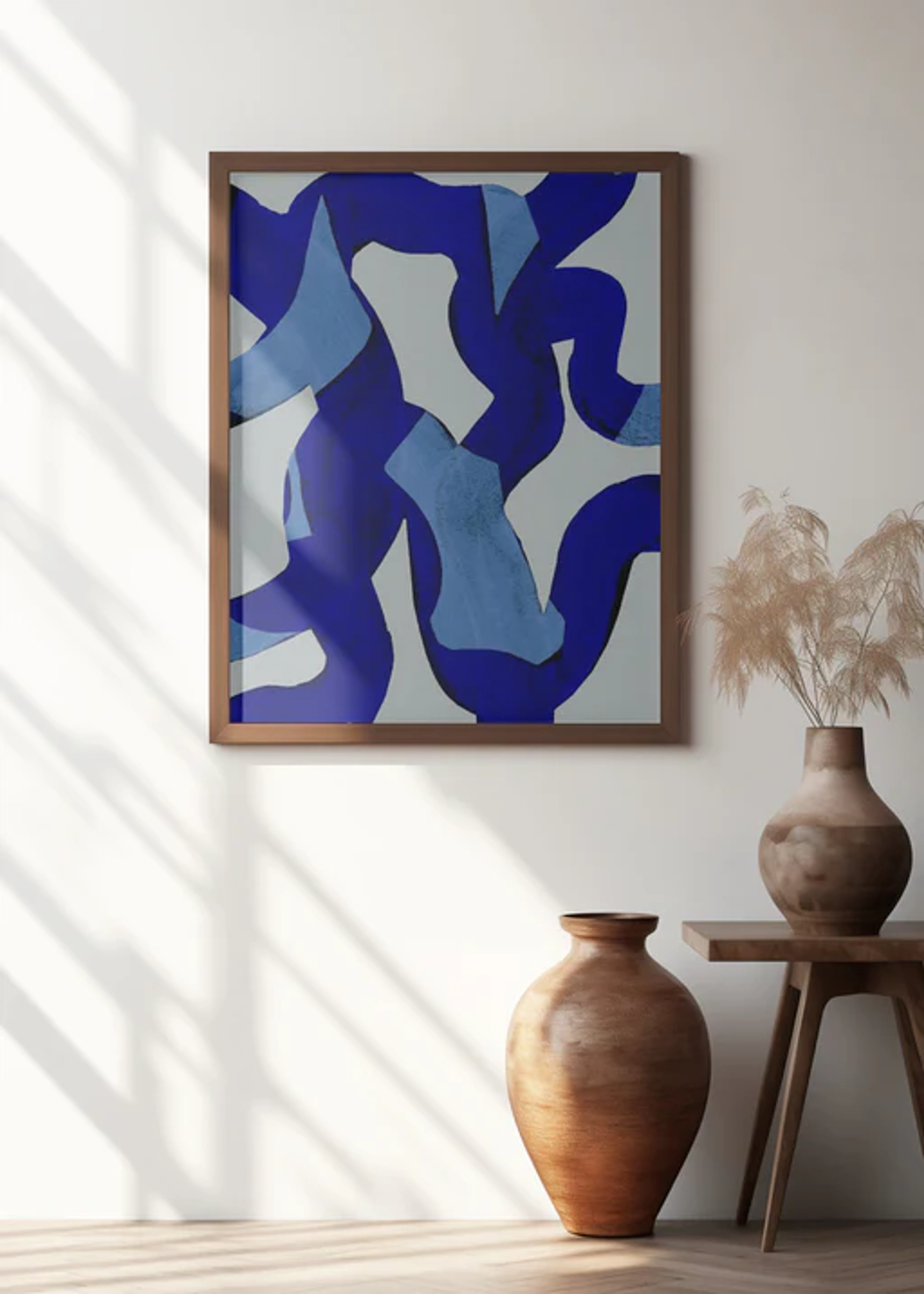
Hallway Art: The Ultimate Guide to Transforming Overlooked Passages into Captivating Galleries
Stop overlooking your hallways! This ultimate guide offers expert tips on choosing, sizing, arranging, lighting, and securing art, transforming overlooked passages into captivating galleries. Discover your perfect display.
My Ultimate Guide to Hallway Art: Transforming Overlooked Passages into Captivating Galleries
I know what you're thinking: hallways? Aren't they just, well, hallways? For years, I approached them with a purely functional mindset, seeing them as nothing more than connectors between the 'real' rooms. But then, a quiet epiphany hit me, much like a subtle shift in light: these aren't just conduits. They are the whispered narrative of your home, a continuous thread weaving through its very fabric, and frankly, an incredible, often-missed opportunity to keep the visual conversation flowing. Displaying art in a hallway isn't just about filling empty walls; it's about transforming a transient space into a destination, a miniature gallery that delights and surprises. It can tell a subtle story of transition or journey as you pass through, making every single step feel more intentional, more you.
In this comprehensive guide, we'll explore not just the 'why,' but the crucial 'how,' covering everything from understanding the peculiarities of your space and mastering light, to strategic arrangement techniques and practical, secure hanging methods. Consider this your roadmap to making your hallway sing!
Why Hallways Deserve More Than Just a Second Glance: A Historical & Modern Perspective
How many times a day do you walk through your hallway? Probably more than you realize, right? It's a space of constant transition, a journey from one point to another. And what better way to enhance a journey than with art? Historically, hallways (or their architectural equivalents) were far from mere functional passages. Think of the grand porticoes in ancient Roman villas, adorned with frescoes and busts, guiding visitors through a curated experience before they even entered the main living spaces. Or imagine the long, decorated galleries of Baroque palaces like Versailles, where art was deliberately placed to impress and narrate as one moved through the royal abode. Even in awe-inspiring places like the Vatican Museums, you see glimpses of their potential to be much more.

In modern design, we're finally recognizing their integral role in a home's aesthetic. A well-curated hallway can set the tone for the rooms it connects, introduce new themes, or even serve as a concentrated collection of pieces that might not fit elsewhere. It's a chance to tell a story, one frame at a time, without overwhelming a larger space. It's also an incredible way to showcase those smaller, perhaps more intimate, pieces that truly deserve their own spotlight, turning a quick walk into a mindful pause. For me, it's about creating a continuous, enriching visual journey throughout the entire home – a design opportunity too good to miss.
Essential Checks: What to Consider Before Hanging Hallway Art
Before I even think about what goes where, I run through a few mental checks. These are the things I've learned to consider over years of trial and error (and yes, a few regrettable nail holes that a bit of plaster quickly fixed). It's vital to understand the unique challenges and opportunities your hallway presents – let's start with a few essential checks.
1. The Peculiarities of Space & Scale
Hallways are tricky, right? They're often long and narrow, sometimes with varying ceiling heights. Unlike a living room, which often offers expansive walls for grand statements, a hallway's confines demand a more strategic, deliberate approach. I once learned the hard way that a colossal abstract piece, the kind I usually reserve for my living room, simply swallowed my notoriously narrow entryway, making it feel like a suffocating tunnel. It was a humbling lesson in scale!
- Long, Narrow Hallways: These are perfect for creating a visual rhythm. I often lean towards a series of smaller pieces or a linear gallery wall to draw the eye down the length, rather than one huge piece that might feel overwhelming. A well-executed linear display can make the space feel longer and more intentional. For specific ideas, explore Art for Long Hallways.
- Wider Hallways/Entryways: If you're lucky enough to have a wider space, you might be able to handle a larger statement piece or a more expansive gallery. An art for entryway can really set the tone for your whole home.
- Traffic Flow: Remember, people walk through here constantly! Avoid pieces that jut out too much or are placed at eye-level where they might get bumped. This sounds obvious, but I've learned from experience that a carefully considered placement can save both your art and your shins. Also, don't forget about leaving some negative space; sometimes an empty stretch of wall makes the art you do display even more impactful. Negative space, essentially the 'empty' areas around and between your art pieces, is just as important as the art itself – it gives the eye a place to rest and allows each piece to truly sing, preventing visual clutter and even reducing anxiety in a transitional space.
- Verticality: Don't forget to look up! If you have high ceilings, art can extend vertically, drawing the eye upwards and creating a sense of vertical rhythm, making the space feel grander, especially near an adjacent staircase. Maximizing impact choosing art for stairwells and hallways is a fantastic read on this.
- Architectural Features: Consider how to integrate art around existing architectural elements like built-in sconces, alcoves, or even radiators. Sometimes a small, impactful piece perfectly complements an alcove, while other times you might use a linear display to draw attention away from an awkward feature.
2. The Dance of Light: Illuminating Your Art
Lighting in a hallway can be... unpredictable. Some get lovely natural light; others are perpetually dim. But don't despair! Every hallway can be an art hotspot with the right illumination.

- Natural Light: If you have it, embrace it! Position pieces to catch the light, but be mindful of direct sunlight that can fade artwork over time. UV-protective glazing is a lifesaver here. If your hallway isn't so bright, you might find inspiration in how to choose art for a room with low light.
- Artificial Light: This is where you get to play curator. Layering light is key. Track lighting offers flexibility, well-placed picture lights directly above individual pieces provide focused drama, or even small wall sconces can dramatically highlight your art, turning a drab hallway into a dramatic art walk. It's all about directing the gaze and creating that gallery feel without causing glare. For deeper insights, check out the art of display: how to light and position abstract art for maximum impact.
- Mirrors as Light Reflectors: A strategically placed mirror, especially an ornate gilded mirror, can work wonders. It doesn't just expand the perceived space; it also bounces any available natural or artificial light around, making your art pop even more.
3. Mood & Flow: The Unsung Heroes of Transition
Your hallway is a connector, a transitional space. The art you choose should contribute to the overall mood of your home and help create a seamless flow between rooms. I try to think of it as a visual bridge, or even a narrative corridor. Do you want a calming, serene passage before entering a bustling living room, or a vibrant, energetic burst of creativity? Consistency in style or theme can be a powerful tool, especially when creating a cohesive art collection across different rooms. Sometimes I even consider the subtle sensory experience; a quiet hallway with serene art can be a mindful pause, allowing you to mentally shift gears as you move through your home. What kind of narrative do you want your hallway to whisper? Think about the psychological journey you're inviting with each step.
4. Durability & Security: Protecting Your Hallway Treasures
In a high-traffic area like a hallway, practical considerations become paramount, especially if you have an active household with pets or children. No one wants bumped art or accidental damage – trust me, I've seen it! Thinking about durability from the start saves a lot of heartache (and expensive repairs).
- Choose Durable Materials: Consider pieces with acrylic glazing (instead of traditional glass) for framed art, or canvas prints/paintings that can withstand an occasional brush or bump. Metal or wood art pieces can also be incredibly resilient. For prints, look for UV-protective coatings on the glazing and fade-resistant inks to ensure longevity. You can also opt for pieces framed without glass, such as a beautifully textured canvas or a framed print with a protective clear varnish that resists scuffing. For my own colorful abstract pieces, a durable canvas print can often be a perfect, resilient choice for a busy hallway.
- Secure Hanging: Beyond just hanging, think securing. Because nobody wants their prized abstract to do a dramatic swan dive after a playful pet or an overzealous vacuum cleaner! For heavier pieces, I always recommend using two D-rings or picture hangers on the back, spaced appropriately, rather than a single wire. This prevents tilting and offers better stability. Then, use strong anchors appropriate for your wall type (e.g., toggle bolts for drywall). For added peace of mind, especially with active households, use museum wax or earthquake putty on the bottom corners of frames to prevent shifting or swinging from sudden movements. I once had a framed print constantly go crooked until I used a tiny bit of putty – problem solved! For particularly valuable pieces or in high-risk environments, consider specialized security hanging systems that lock the frame to the wall brackets – ultimate peace of mind. This small step can be a lifesaver!
- Easy Maintenance & Preservation: Opt for art that's relatively easy to dust or gently wipe clean. Textured or highly intricate pieces might accumulate more dust in a busy thoroughfare, requiring more frequent (and careful) attention. Regularly dusting framed art (with a soft cloth) and canvases (with a soft brush) helps prevent grime buildup. Also, always avoid hanging valuable art directly opposite a window where it might be exposed to prolonged, direct sunlight, which can cause irreversible fading.
The Art of Transformation: Your Step-by-Step Hallway Gallery Guide
Okay, with those crucial considerations in mind, let's get down to the nitty-gritty. This is where we make the magic happen and turn your hallway into a truly captivating art destination.
Choosing the Right Art for Your Hallway
This is perhaps the most crucial step. I always advise people to choose art they genuinely love, but for a hallway, there are a few extra layers of consideration. What kind of visual journey do you want to unfold?

Size and Proportion: Getting It Just Right
This is where many people stumble. The wrong size can make a hallway feel either cluttered or sparse. Here's a little cheat sheet I use, along with why these general rules work:
Hallway Type | Recommended Art Size | Placement Considerations |
|---|---|---|
| Narrow & Long | Multiple small to medium pieces (e.g., 8x10 to 16x20 inches) or a linear gallery wall with varied sizes. | Center art at 57-60 inches (145-152 cm) from the floor (to the center of the artwork). Allow 2-4 inches between pieces. Consistent bottom or center line for visual coherence. |
| Wide & Long | Larger statement pieces (e.g., 24x36 inches or bigger) or an expansive gallery wall. Can also support a single, impactful horizontal piece. | Treat as a feature wall. Hang larger pieces slightly lower if there's furniture below (e.g., a console table, leaving 6-8 inches between art and furniture). Vary heights dynamically for visual interest. |
| Short & Wide | One medium to large statement piece or a small, tightly curated gallery wall. | Focus on impact without overcrowding. If an entryway, make it a strong focal point. Art's width should be no more than two-thirds of the wall's width. |
| Hallway with Doors | Smaller pieces placed in the wall segments between doors. Avoid large pieces that get cut off by door frames. | Center art within available wall space between doors. Group smaller pieces if space allows. Leave at least 3-6 inches of space from door frames. |
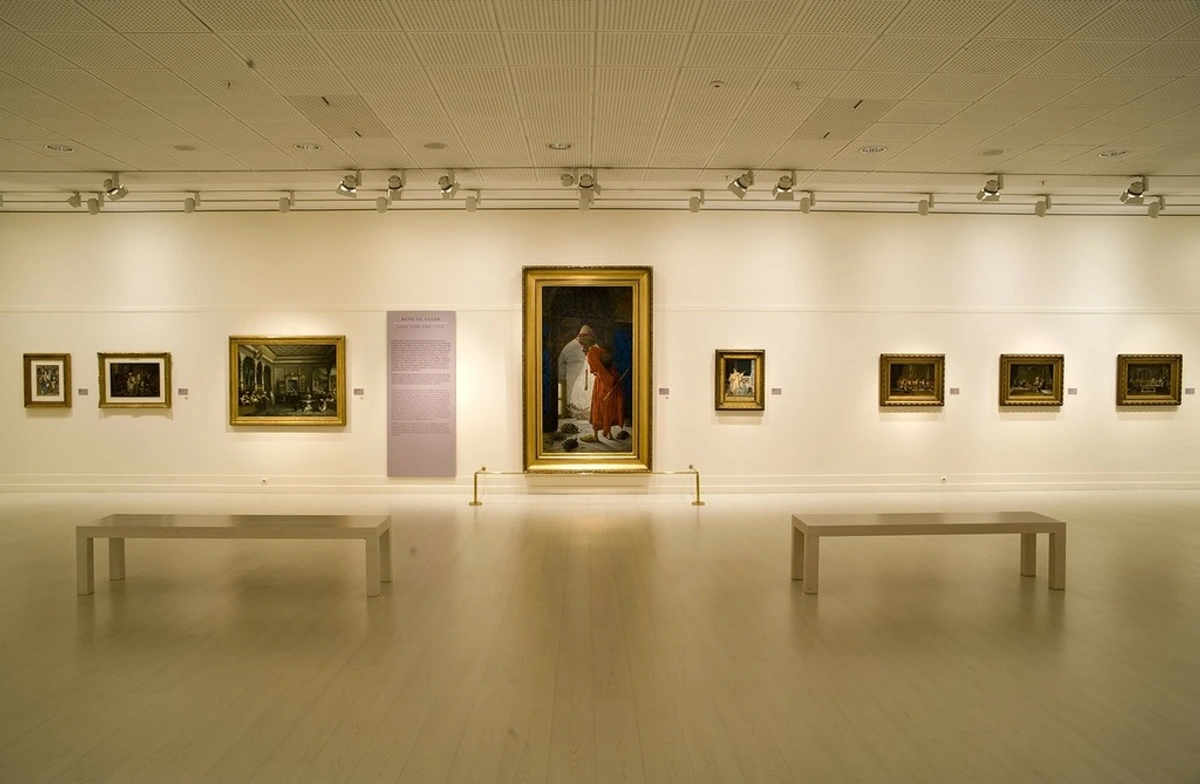
Remember, the general rule of thumb is that the center of the artwork (or the center of a gallery grouping) should be around 57-60 inches (145-152 cm) from the floor. Why? Because this is roughly average eye level, making it comfortable for most people to view the art without craning their necks up or down. However, I always say to trust your gut – if it feels right to your eye, that's what truly matters. For more on this, check out how to choose the right size art for your space.
Themes and Cohesion: Telling Your Story One Wall at a Time
I find that hallways are perfect for showcasing a series of works by one artist, or pieces with a consistent theme or color palette. It naturally creates that sense of flow I'm always talking about. Imagine a collection of serene botanical prints like 'Whispers of the Forest,' a dynamic series of black and white cityscape photographs, or abstract pieces all featuring a particular color accent. For instance, a series of my own colorful abstract pieces could inject a vibrant and cohesive energy into a previously overlooked corridor. Or, conversely, a hallway can be a place to intentionally disrupt, to introduce a bold abstract piece that signals a shift in design as you move into the next room. What story do you want your hallway to tell? Perhaps a series of colorful abstract pieces could tell a vibrant tale as you move through your home, acting as a visual compass.
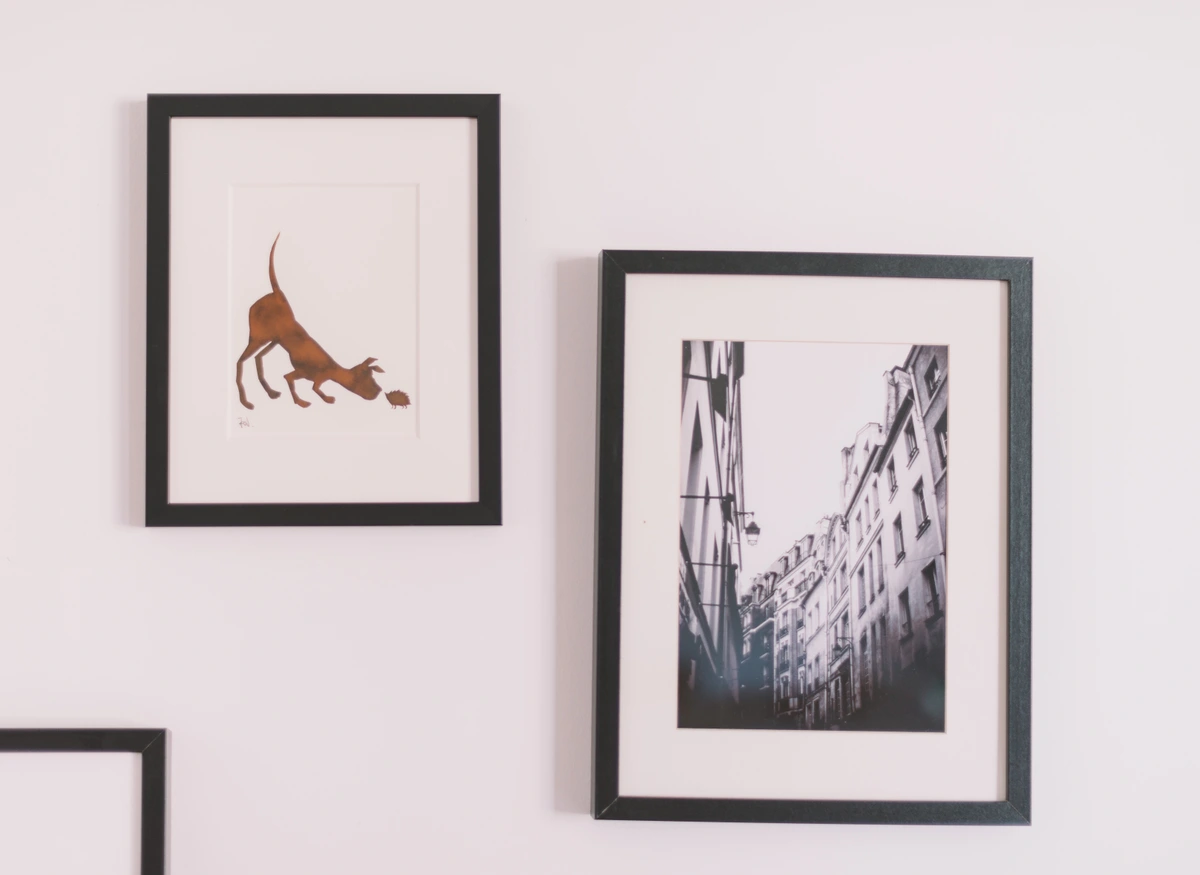
Framing and Mats: The Unsung Protectors and Elevators
Don't underestimate the power of a good frame! Especially in a hallway where art is viewed in motion and potentially subject to more traffic, the right frame can truly elevate a piece. For a cohesive hallway display, consistency in framing can really pull a collection together, even if the art itself is quite diverse. Ornate frames can add a touch of classic elegance, while sleek, minimalist frames keep things modern. Mats not only protect the artwork by creating a buffer from the glass but also give it breathing room, enhancing its presence on the wall. If you're pondering frames, I've got some thoughts on how to frame a canvas painting that might help you decide.
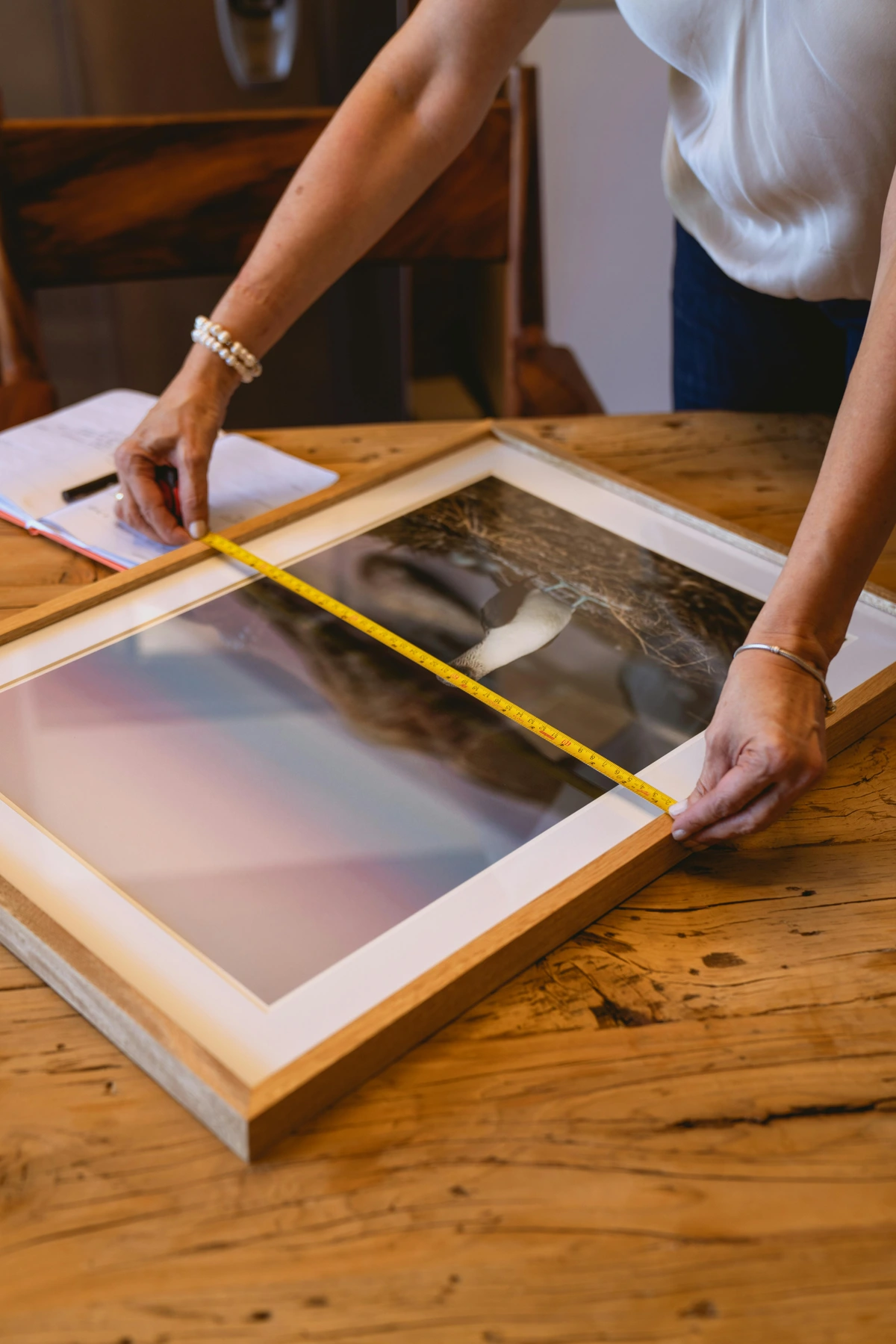
Hallway Art for Different Home Styles: A Curated Look
What's your home's style? Let's see how hallway art can amplify it. Just as your home has its own personality, your hallway art should reflect and enhance it. This isn't about rigid rules, but about creating harmony or a deliberate, delightful contrast. Here are some ideas:
- Modern: Think clean lines, minimalist frames, abstract geometric art, or large-scale photography (black and white often works beautifully). The focus here is on precision and striking impact. Consider a piece with bold brushstrokes in a minimalist frame or a sleek metal sculpture. Movements like Minimalism or Bauhaus-inspired art fit perfectly here. My own abstract art, with its clean forms and vibrant colors, often finds a perfect home in modern hallways.
- Traditional: Classic landscapes (like a serene 'Morning Mist on the Lake'), portraits (perhaps even family heirlooms), or still life paintings (imagine a Dutch Master's still life with rich textures) can add timeless elegance. Ornate gilded frames enhance this style. Art from the Renaissance or Baroque periods, often rich in narrative and detail, would also be a beautiful choice.
- Bohemian: Mix textures, global prints, woven wall hangings, and perhaps some textile art. Embrace an eclectic mix of styles, colors, and media. Think decorating with abstract art in bohemian-chic interiors. The layering of styles and natural materials echoes the free-spirited nature of bohemian design.
- Minimalist: A carefully chosen, impactful single piece, or a very curated, monochromatic gallery wall with subtle textures. The focus here is on quality over quantity, and allowing ample negative space. Explore art for minimalist interiors. Here, a single, compelling abstract with a simple frame can speak volumes.
- Eclectic: This is where you can truly mix and match! Combine antique finds with contemporary pieces, personal photos with abstract prints. The key is to find some common thread – a color, a frame style, or a theme – to prevent it from looking chaotic. Think about decorating with abstract art in eclectic interiors. It's about creating a harmonious, personal curation.

Arrangement Strategies: My Personal Playground
This is the fun part, where you get to play designer! I love experimenting with different layouts, treating the hallway as a canvas for visual storytelling. What kind of visual journey do you want to unfold?

The Single Statement Piece: Bold & Unforgettable
Sometimes, less is more. A single, captivating piece can truly transform a hallway, giving it a powerful focal point. It can be a large abstract canvas that commands attention, like this vibrant abstract painting, or a unique sculptural piece. This works particularly well in wider hallways or at the end of a long one, creating an immediate and impactful destination. The goal is to stop people in their tracks, even for just a moment, inviting them to pause and reflect before moving on. I once placed a striking, large-scale abstract piece at the end of a rather mundane hallway, and it completely redefined the space, making it feel intentional and dramatic – almost like a visual reward for reaching the end.
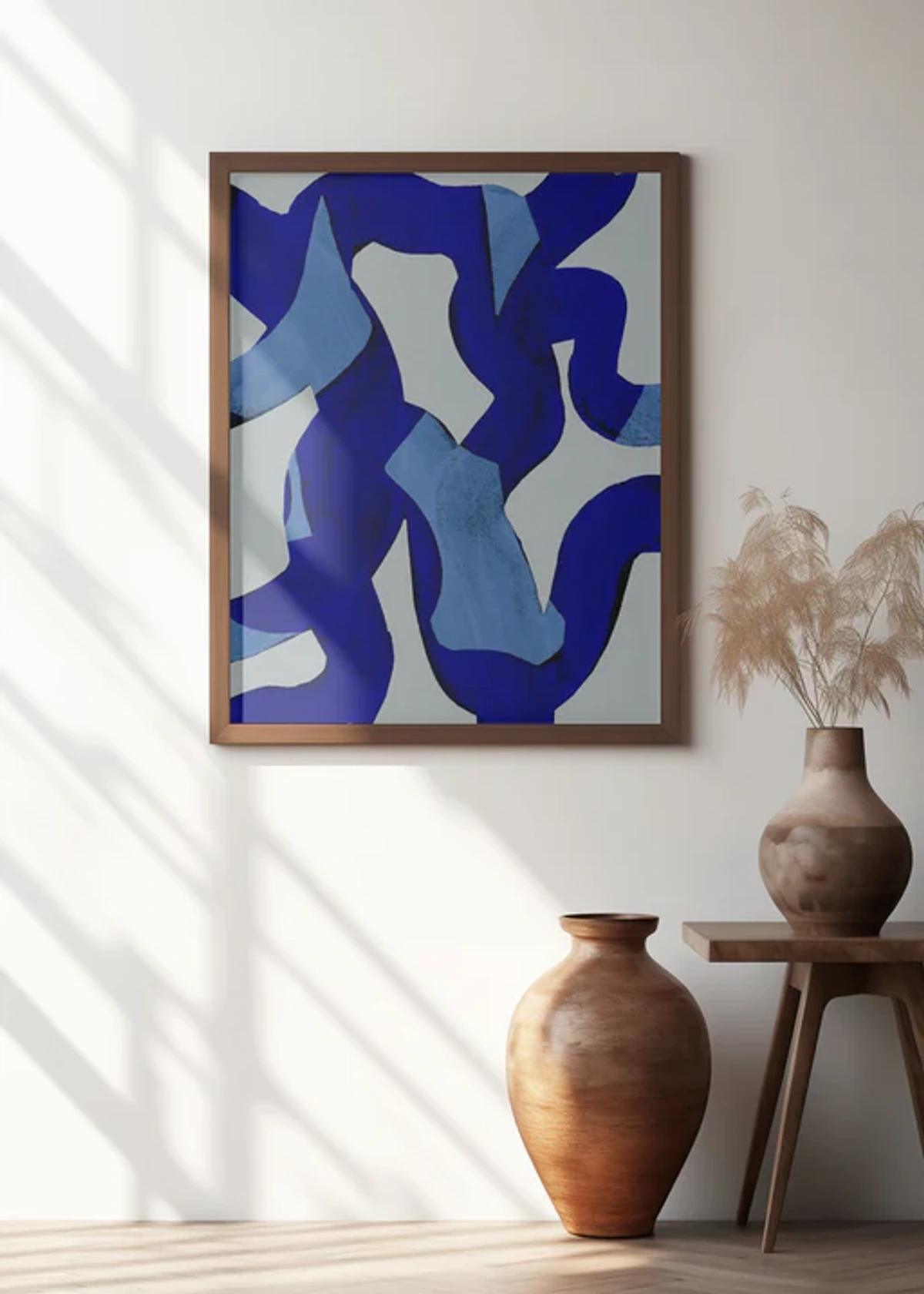
The Dynamic Gallery Wall: A Personal Narrative
Ah, the gallery wall! My absolute favorite for hallways. It allows for so much personality and can accommodate a mix of sizes, styles, and even media. I often start with a central piece and build outwards, aiming for visual balance rather than strict symmetry. Don't be afraid to mix family photos with fine art – that's often where the magic happens and creates a truly personal narrative. I remember once creating a gallery wall in a rather dark hallway, mixing vibrant abstract prints with antique family photographs, all in matching frames. The contrast was unexpected and utterly captivating, telling a story of past and present. Need a guide? There's a fantastic article on how to create a gallery wall for a maximalist interior that offers brilliant insights, even if you're not a maximalist! The principles of arrangement remain universal, regardless of your ultimate aesthetic. For planning, I always cut out paper templates of my frames and use painter's tape to mock up the arrangement on the wall first – it saves so many regrettable nail holes!

Linear Displays: The Hallway's Best Friend
For those long, narrow corridors, a linear display is often the most harmonious. This involves hanging pieces in a straight line, either horizontally or vertically. You can keep the frames consistent for a minimalist look, or vary them for more eclectic charm. It helps guide the eye and prevents the space from feeling choppy. Consider a collection of serene botanical prints, a series of abstract cityscapes, or even my own colorful abstract pieces arranged this way to add a vibrant, flowing energy. This strategy not only maximizes the visual length of the hallway but also offers a continuous, calming visual experience. For even more detailed inspiration, revisit Art for Long Hallways.
Mixed Media, Shelving, and Mirrors: Beyond Flat Walls
Who says art has to be flat and hanging? I love incorporating small sculptures, unique ceramics, interesting art books, or even carefully selected plants on narrow console tables or floating shelves in a wider hallway. It adds depth, texture, and a tactile quality, turning your hallway into a truly curated, three-dimensional experience. You might get some inspiration from how to display art on a bookshelf – many of those principles can be adapted here to create compelling vignettes. For photography, consider varying print sizes and mixing black and white with color to create visual interest. And don't forget the power of a mirror! A well-placed mirror not only reflects light and expands the space but can also reflect the wall art opposite it, creating an interesting interplay and doubling the visual impact of your collection. It's a clever trick to maximize what you already have.
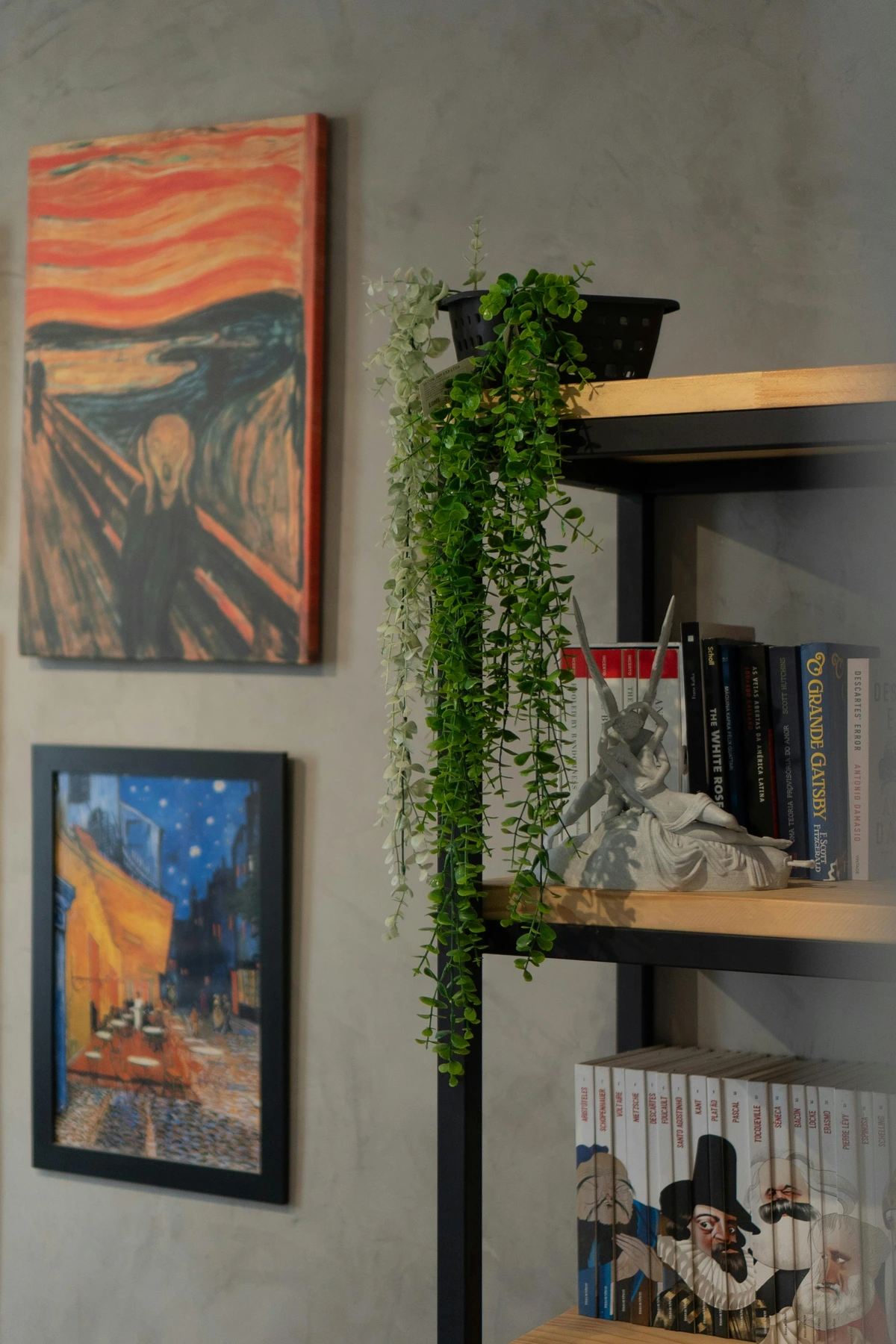
Hanging Techniques: The Practicalities and Protection
Once you've decided on your art and arrangement, it's time to hang! I always recommend using the right hardware for your wall type to prevent damage and ensure longevity. Whether you have drywall, plaster walls, or even brick walls, there's a technique for it. Don't rush this step; a level, a good measuring tape, and strong anchors are your best friends here. For accurate placement, I always measure from the wire to the top of the frame, then from the top of the frame to where I want the hook to go on the wall. And a partner, if you're like me and your hands aren't quite long enough for those larger pieces! Always consider the weight of the artwork and the integrity of your wall before making a single hole. For extra peace of mind, especially in busy hallways, remember to use museum wax or earthquake putty on the bottom corners of frames to keep them firmly in place and prevent accidental bumps from knocking them askew. For very valuable or delicate pieces, consider specialized security hanging systems that physically lock the art to the wall, offering unparalleled protection against movement or theft. Trust me, a little planning here goes a long way in avoiding future headaches.
My Personal Pro-Tips for Hallway Art Mastery
Alright, let's distill this into some actionable wisdom I've picked up over the years. These are the little insights that make a big difference in creating a truly exceptional hallway gallery.
- Start Small, Experiment Often: Don't feel pressured to get it perfect on the first try. Use painter's tape or cut-out paper templates to mock up your arrangement before making any holes. I've rearranged my own hallway art countless times – it's part of the fun, and often leads to unexpected breakthroughs! This iterative process is key to finding what truly resonates with your space.
- Embrace the Unexpected: A vibrant abstract piece in a very traditional hallway? Why not! Sometimes the most engaging displays come from breaking the 'rules.' I once saw a whimsical, surrealist painting in a very formal, dimly lit corridor, and it was utterly captivating, sparking conversation and delight. Think about what makes you smile. Perhaps a visit to the Den Bosch Museum, known for its eclectic mix of historical and contemporary art, could spark some wonderfully unconventional ideas. Don't be afraid to juxtapose!
- Consider the Floor: Yes, even the floor. A patterned rug can complement or contrast with your wall art, adding another layer to the visual journey. Imagine a graphic, geometric rug enhancing a contemporary abstract collection, or a plush, textured runner adding warmth to a more traditional display. It's about building a holistic visual experience.
- Don't Forget About Negative Space: It's worth reiterating: leaving some deliberate empty space around your art or within a gallery wall is crucial. Think of it as the visual breathing room, the silent moments that allow each piece to have its own moment to shine. For narrower hallways, ample negative space prevents a cluttered, claustrophobic feel, while in wider areas, it can still provide a calming pause amidst a denser collection.
- Curate for Movement: Remember that hallway art is often viewed in motion. Consider how pieces interact as you walk past them. A linear progression might tell a story, or a cluster could create a momentary pause. Think about how the art unfolds as you move through the space, creating a dynamic, flowing experience rather than static snapshots.
- Hallway Art as a Conversation Starter: Your hallway is often the first and last impression guests have. Why not make it memorable? Choose pieces that spark curiosity, tell a personal story (perhaps subtle abstract pieces that hint at a memory), or are simply striking enough to invite comment. I love it when a guest pauses in my hallway, genuinely intrigued by a piece, prompting a conversation I might not have had otherwise. It's about inviting engagement, not just admiration.
- Accessibility Matters: When designing your hallway gallery, keep accessibility in mind. While eye-level is standard, consider varying heights for a more dynamic display that can be enjoyed by everyone, including children or those using wheelchairs. Ensure pathways remain clear and art isn't protruding excessively. Keep wider doorways and clear paths for easy movement, especially if your hallway is a primary thoroughfare.
- Digital Art Displays (with a Grain of Salt): While I'm generally a purist for tangible art, I've seen digital frames subtly integrated into modern hallways. They offer the flexibility of rotating art frequently. However, for a truly authoritative and timeless collection, I wouldn't recommend anything involving fleeting digital trends like blockchain or NFTs for a permanent hallway display at this time; stick to proven, tactile display methods that offer lasting beauty and substance.
- Sustainability in Art Choices: Think about the materials used in your art and frames. Opt for pieces made with sustainable practices or from recycled materials. This not only contributes to an eco-conscious home but also adds another layer of story and intentionality to your collection.
Frequently Asked Questions About Hallway Art
Let's tackle some of the common questions I hear about decorating these often-tricky spaces, turning confusion into clarity!

Q: How high should I hang art in a hallway?
A: Generally, the center of the artwork (or the center of a grouping) should be about 57-60 inches (145-152 cm) from the floor. This is considered average eye level, making it comfortable for most adults to view without straining. However, adjust if your ceilings are unusually high or low, or if you're hanging above furniture, leaving 6-8 inches between the furniture and the bottom of the art.
Q: What kind of art is best for a narrow hallway?
A: I usually suggest a series of smaller to medium-sized pieces, arranged in a linear fashion. This helps draw the eye down the length of the hallway without overwhelming the narrow space. Gallery walls with varying, but not overly large, pieces also work wonderfully. Think about how decorating with abstract art in open-concept living spaces often uses art to create flow, a principle that applies beautifully to hallways. You can also explore specific tips in decorating hallways and staircases with art.
Q: Can I mix different styles of art in my hallway gallery wall?
A: Absolutely, and I encourage it! Mixing styles, mediums, and even personal photos can create a truly unique and engaging gallery wall. The key is to find some element of cohesion, whether it's a consistent color palette, similar framing, or a shared theme, to tie everything together and prevent it from looking chaotic. This is where your personal story really comes through, making your hallway truly yours!
Q: How do I light art in a dark hallway?
A: Track lighting, picture lights directly above individual pieces, or even small wall sconces can effectively illuminate art in a dim hallway. The goal is to create targeted light that highlights the artwork without causing glare. You can also strategically place a mirror to reflect available light, making the space feel brighter and expanding the view of your art. Remember, thoughtful lighting transforms a hallway from drab to dramatic, creating that desired gallery ambiance.
Q: Is it okay to hang very personal photos in a high-traffic hallway?
A: Yes, it's more than okay – it's wonderful! Hallways are an intimate part of your home's story. Just ensure they are framed well, perhaps with UV-protective acrylic glazing, and securely fastened with two hooks and museum wax to prevent bumps or shifting. If you're nervous about privacy, choose photos that are more abstract or less overtly personal, or mix them with other art to balance the display. It's your home, so personalize it authentically!
Q: How do I choose art for a hallway with pets or children?
A: When decorating a hallway with active pets or young children, prioritize durable, easily cleaned art and secure hanging. Opt for framed prints with acrylic (instead of glass) or canvas art that can withstand a playful bump. Ensure all art is securely fastened to the wall to prevent accidental falls, perhaps using two hooks per piece for extra stability and museum wax on the bottom corners. Place more delicate or irreplaceable pieces higher up, out of reach, or on sturdy shelves rather than precarious floor stands. Think robust and resilient!
Q: How do I plan a gallery wall layout without making too many holes?
A: This is a classic decorator's trick! Cut out paper templates the exact size of your framed art pieces. Use painter's tape to arrange these templates on your wall until you find the perfect layout. This allows you to experiment with different configurations, spacing, and heights without committing to a single nail hole. Once you're happy, mark through the paper where your hooks will go, remove the templates, and then drill – mess-free planning!
In Conclusion: Your Hallway, Reimagined
So there you have it. My not-so-secret secret to transforming those forgotten hallways into vibrant, personality-filled passages. It's about seeing the potential, embracing the journey, and making every step through your home a little more artful. Don't let those walls go unnoticed; give them a voice, a story, a splash of color. After all, your home is your canvas, and every surface is an opportunity for expression. Go ahead, make your hallway sing! Which forgotten wall in your home is about to get its moment in the spotlight? I challenge you to grab some painter's tape and start envisioning its new story today.
If you're looking for inspiration, I invite you to explore my abstract art collection – perhaps one of my pieces is the perfect start to your hallway's new chapter. And if you're curious about my journey, take a peek at my timeline. Happy decorating!





